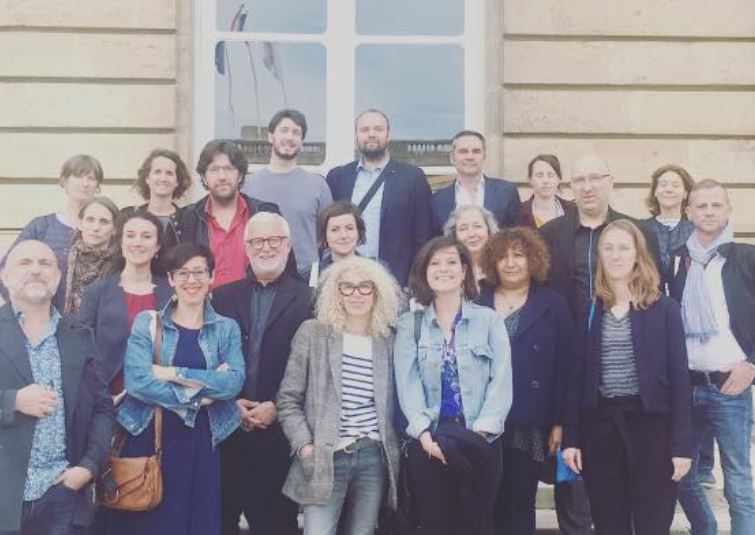
Paris, France, December 2020 – Efus’ two working groups on Nightlife and on Security and Innovation organised a web conference on nightlife and security, on 24 November, as part of the Right to Partying Festival (États généraux du droit à la fête) of Efus’ long-time partner the Culture Bar-Bars collective. The outcomes of the festival, which brought together more than 160,000 people online according to the organisers, will be compiled in a White Paper that will be presented to the French Parliament and to local and regional authorities.
Below are insights from Efus’ web conference, which gathered local elected officials and representatives from research institutions, civil society, the private sector and think tanks.
Why take into account feelings of insecurity in the first place?
Feelings of insecurity are complex, varied and not necessarily linked to crime rates. One trend shows that it is often those groups that are statistically less touched by victimization that voice the most concern about crime. Understanding which factors affect different groups’ perceptions of security helps untangle fear of crime from other emotional reactions such as situational anxiety, shock, anger or distress. Feelings of insecurity have an impact on individual and collective well-being, on political and economic behaviour and on the way we use public space.
This last point is particularly relevant at night. The way a city is used by residents and visitors changes at night as their needs and demands are not the same as in daytime. Possible responses should therefore reflect these differences. At night, the usual points of reference disappear; citizens experience an increased sense of uncertainty and anxiety that feeds a specific feeling of insecurity. Being able to better identify and assess such feelings is the first step in towards mitigation measures that respond to the needs of the entire population.
A participatory research approach
Elena Guidorzi from Experientia, an international user experience design consultancy and partner of the TONITE project, outlined the methodology employed to identify feelings of insecurity at night in Turin (Italy). In two different neighbourhoods, researchers collected information through urban walks, interviews and an online survey. They found that multiple factors impact feelings of insecurity, most importantly attendance and the physical characteristics of a place. Social factors, such as social cohesion, the network of local associations, the cultural capital of respondents and their familiarity also played into the mix.
Randy Bloeme from the Amsterdam-based policy research and social innovation institute DSP-Groep explained that they also use neighbourhood walks to better assess residents’ perceptions of nightlife experiences. It can also be helpful to ask residents and nightlife actors about the solutions they envision. This includes them in the solution ideation process and fosters a reflection on existing opportunities and how each person can do their part. Similarly to Experientia, DSP-Groep observed that small physical changes of a public space can have an important impact on feelings of insecurity at night.
Aušra Pocienė and Aleksandras Dobryninas from the University of Vilnius (Lithuania) echoed the importance of gaining a good understanding of the problem in order to guide potential interventions. This also includes literature reviews and analysing media coverage. In the framework of the SHINE project, they are researching ways to reduce sexual harassment in nightlife entertainment spots.
Prevention and mitigation measures for a safer nightlife that include a multitude of stakeholders
The three speakers of the web conference highlighted that not only the research process but also the development and implementation of solutions benefit from the inclusion of multiple stakeholders. Randy Bloeme pointed out that the standard policy responses often include the intensification of police measures. An alternative to this is the Festival Approach, a concept that relies on implementing a clear logistical system in which people are able to move around quickly and easily. It offers basic facilities and visible signage and indications. The Festival Approach necessitates a collaborative process between support services and institutions – from the police, over waste management, to first aid services.
The University of Vilnius found that one way to reduce sexual harassment in nightlife spots is to build collaborative support networks between citizens, bar owners, local government and law enforcement agencies. This includes public education and awareness raising initiatives on social responsibility, gender and sexual harassment. This approach also necessitates the implication of nightlife businesses by enabling and encouraging them to challenge their own perceptions and putting in place intervention standards when sexual harassment is observed.
The role of local and regional authorities
Elena Guidorzi pointed out that collaboration and cooperation is not always as easy as we would like it to be. However, having multiple stakeholders be part of the project can facilitate outreach efforts. Local municipalities have invaluable expertise when it comes to understanding the complexity of problems. They also have established relations with local associations and community leaders and can serve as intermediaries.
Another important tool that local authorities have at their disposal is establishing a dialogue between the involved parts in festive activities, mainly involving residents. The key is to provide a safe and healthy nightlife for everyone (party-goers, residents and night-workers).
For instance, in the example presented by Randy Bloeme, dialogue with residents from Amsterdam’s main party areas (Red Light District, Rembrandt Square and Leidse Square) is a core component of the Festival Approach as it allows to ensure a more collaborative climate where the different parts will benefit. Residents know that activities are taking place but also that the municipality is doing all they can to prevent any excessive nuisance.
Although this approach works very well on a city’s established festive districts, it can be more challenging to deploy in less frequented areas. In this case, it is interesting to go a step further and directly involve local residents in the creation of a concerted calendar of activities. Such a tool has successfully been used by some European cities, such as Bordeaux in France, to reduce disinformation about the events taking place in the neighbourhood and consequently reinforce residents’ appropriation of their neighbourhood. And this is closely linked to the improvement of their perception of security.
> You can follow Efus’ working groups on Nightlife and on Security and Innovation on Efus Network



